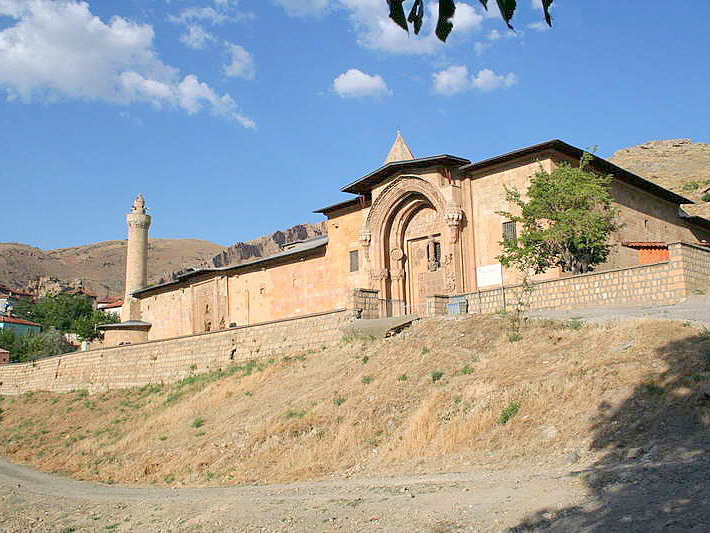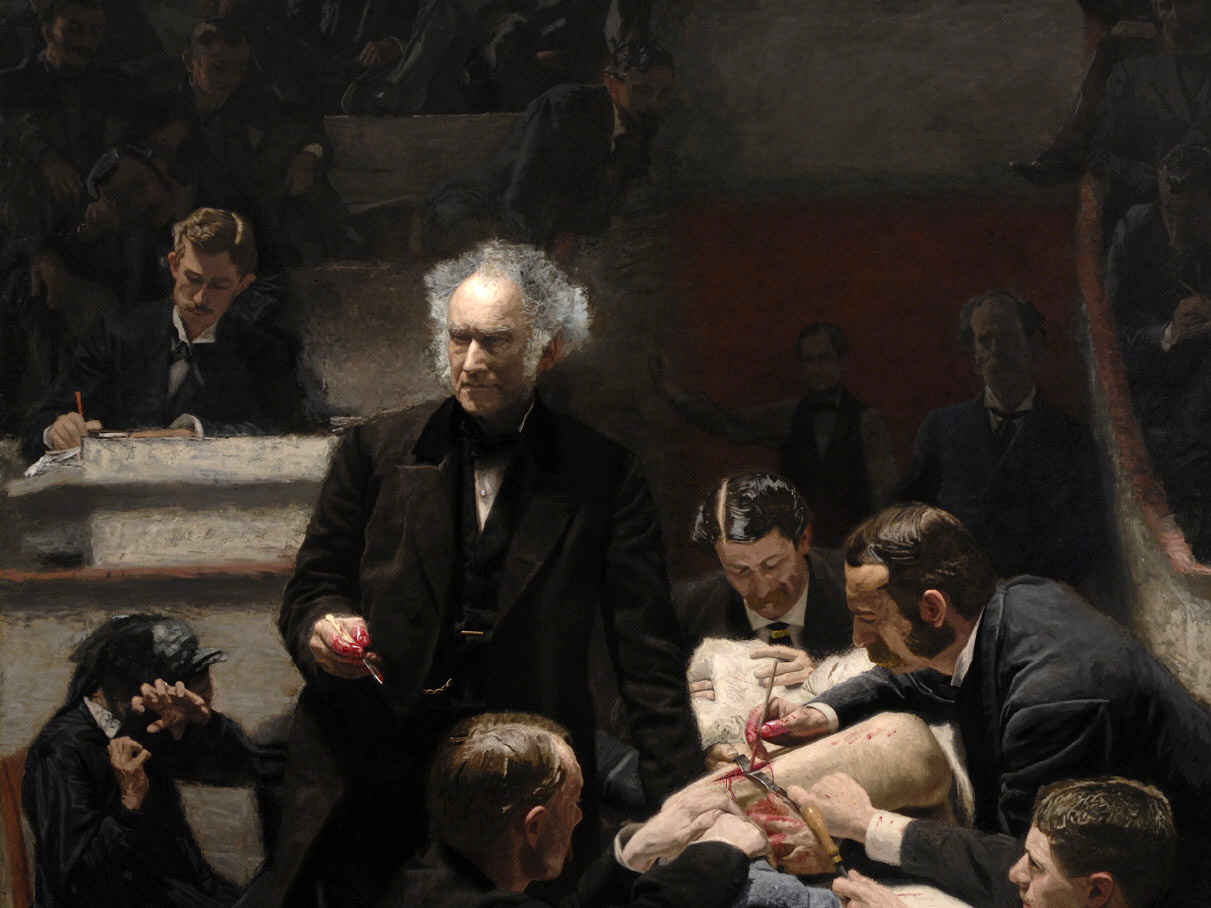Works Cited
Footnotes
1. Leigh Ann Craig, PhD, “Medival Medicine, Dr. Craig.”
2. brothers, Very Rich Hours of the Duke of Berry English.
3. “Hippocrates | Biography, Definition, & Facts.”
4. “Hippocratic Oath.”
5. “Hippocratic Oath.”
6. “Hippocratic Oath -- Britannica Academic.”
7. “450px-Hippocrates_title_page_Froben.Jpg (450×600).”
8. “Galen of Pergamum -- Britannica Academic.”
9. Anathomia. 53v “Wound Man.”
10. “Medicine, Diagnosis and Treatment in the Middle Ages.”
11. Anathomia. “Muscle Man” in Red and Black.
12. “Medicine, Diagnosis and Treatment in the Middle Ages.”
13. Bloodletting Man Showing the Influence of Zodiac and Planets.
14. Leigh Ann Craig, PhD, “Medival Medicine, Dr. Craig.”
15. Prioreschi, “Determinants of the Revival of Dissection of the Human Body in the Middle Ages.”
16. Leigh Ann Craig, PhD, “Medival Medicine, Dr. Craig.”
17. Lemmens, English.
18. master, English.
19. Leigh Ann Craig, PhD, “Medival Medicine, Dr. Craig.”
20. “The History of Bloodletting | BC-Medical Journal.”
21. “The History of Bloodletting | BC-Medical Journal.”
22. Tomyarbro, English.
23. Leigh Ann Craig, PhD, “Medival Medicine, Dr. Craig.”
24. “Facts About Cataract | National Eye Institute.”
25. “Cataract Surgery - Mayo Clinic.”
26. “The History of Cataract Surgery.”
27. Leigh Ann Craig, PhD, “Medival Medicine, Dr. Craig.”
28. Unknown, Deutsch.
29. “The Definition of Hernia.”
30. “Inguinal Hernia - Symptoms and Causes.”
31. “Inguinal Hernia - Diagnosis and Treatment - Mayo Clinic.”
32. Leigh Ann Craig, PhD, “Medival Medicine, Dr. Craig.”
33. Leigh Ann Craig, PhD.
34. Leigh Ann Craig, PhD.
35. Hager, The Demon Under the Microscope.
36. “Anatomy and Surgery in Europe and the Middle East during the Middle Ages.”
37. “Anatomy and Surgery in Europe and the Middle East during the Middle Ages.”
38. “Anatomy and Surgery in Europe and the Middle East during the Middle Ages.”
39. “Anatomy and Surgery in Europe and the Middle East during the Middle Ages.”
40. “File:Einhard Vita-Karoli 13th-Cent.Jpg - Wikimedia Commons.”
41. “Trephination.”
42. “Trephination.”
43. “File:Peter Treveris - Engraving of Trepanation for Handywarke of Surgeri 1525.Png - Wikipedia.”
44. “Wayback Machine.”
45. Altman, “Historical Maxillofacial Surgery.”
46. “Prince Hal’s Head-Wound: Cause and Effect - Medievalists.Net.”
47. WillieWillieHarrySte, Henry V Arrowhead Removal.
48. Bambach, “Anatomy in the Renaissance | Essay | Heilbrunn Timeline of Art History | The Metropolitan Museum of Art.”
49. Bambach.
50. Barbiere, Two Flayed Men and Their Skeletons.
51. “Andreas Vesalius | Belgian Physician.”
52. “File:Vesalius Fabrica P372.Jpg - Wikimedia Commons.”
53. “Ambroise Paré | French Surgeon.”
54. “Petit-Type Tourniquet, London, England, 1823-1829.”
55. Ambroise Paré, on the Battlefield Using a Ligature for the A.
56. “Fabricius Hildanus – Father of German Surgery | Hektoen International.”
57. Tubbs et al., “Wilhelm Fabricius von Hilden (Guilhelmus Fabricius Hildanus) 1560–1634.”
58. G. Fabricus Hildanus, Observationum et Curationum...
Sources
“450px-Hippocrates_title_page_Froben.Jpg (450×600).” Accessed August 27, 2018. https://upload.wikimedia.org/wikipedia/commons/thumb/c/cf/Hippocrates_title_page_Froben.jpg/450px-Hippocrates_title_page_Froben.jpg.
Altman, Keith. “Historical Maxillofacial Surgery: The Bradmore Extractor and the Removal of an Arrowhead from the Left Cheek of the Future Henry V in 1403.” British Journal of Oral and Maxillofacial Surgery 53, no. 8 (October 2015): 781–82. https://doi.org/10.1016/j.bjoms.2015.05.020.
“Ambroise Paré | French Surgeon.” Encyclopedia Britannica. Accessed September 2, 2018. https://www.britannica.com/biography/Ambroise-Pare.
Ambroise Paré, on the Battlefield Using a Ligature for the A. https://wellcomeimages.org/indexplus/obf_images/e1/be/88a5ca0fc8994dd9f125f6ec795b.jpg Gallery: https://wellcomeimages.org/indexplus/image/L0018530.html Wellcome Collection gallery (2018-03-23): https://wellcomecollection.org/works/hys5g87a CC-BY-4.0. Accessed September 2, 2018. https://commons.wikimedia.org/wiki/File:Ambroise_Par%C3%A9,_on_the_battlefield_using_a_ligature_for_the_a_Wellcome_L0018530.jpg.
Anathomia. 53v “Wound Man”: Flesh Tinted: Weapons Coloured. https://wellcomeimages.org/indexplus/obf_images/33/7b/e8b71253d1434115f71797fae71c.jpg Gallery: https://wellcomeimages.org/indexplus/image/L0045155.html. Accessed August 27, 2018. https://commons.wikimedia.org/wiki/File:Anathomia.53v%27Wound_man%27;_flesh_tinted;_weapons_coloured._Wellcome_L0045155.jpg.
Anathomia. “Muscle Man” in Red and Black. https://wellcomeimages.org/indexplus/obf_images/66/14/80d3c218f303828a52e085db3772.jpg Gallery: https://wellcomeimages.org/indexplus/image/L0045158.html. Accessed August 27, 2018. https://commons.wikimedia.org/wiki/File:Anathomia._%27Muscle_man%27_in_red_and_black._Wellcome_L0045158.jpg.
“Anatomy and Surgery in Europe and the Middle East during the Middle Ages.” Accessed August 28, 2018. https://www.repository.cam.ac.uk/bitstream/handle/1810/267146/Mitchell2016AnatomyandSurgery.pdf.
“Andreas Vesalius | Belgian Physician.” Encyclopedia Britannica. Accessed September 2, 2018. https://www.britannica.com/biography/Andreas-Vesalius.
Bambach, Author: Carmen. “Anatomy in the Renaissance | Essay | Heilbrunn Timeline of Art History | The Metropolitan Museum of Art.” The Met’s Heilbrunn Timeline of Art History. Accessed September 1, 2018. https://www.metmuseum.org/toah/hd/anat/hd_anat.htm.
Barbiere, Creator:Domenico del. Two Flayed Men and Their Skeletons. circa date QS:P,+1540- -00T00:00:00Z/9,P1480,Q5727902–45 1540. Engraving, sheet: 9 1/2 x 13 1/4 in. (24.1 x 33.6 cm). Metropolitan Museum of Art. https://commons.wikimedia.org/wiki/File:Two_Flayed_Men_and_Their_Skeletons_MET_MM24758~1.jpg.
Bloodletting Man Showing the Influence of Zodiac and Planets. https://wellcomeimages.org/indexplus/obf_images/64/a9/e3a54bb0cc7014221975e0b0987f.jpg Gallery: https://wellcomeimages.org/indexplus/image/L0000850.html. Accessed August 26, 2018. https://commons.wikimedia.org/wiki/File:Bloodletting_man_showing_the_influence_of_zodiac_and_planets_Wellcome_L0000850.jpg.
brothers, Limburg. Very Rich Hours of the Duke of Berry English: Anatomical Man.English: The Anatomical Man or the Zodiacal Man. between and 1416 date QS:P,+1411- -00T00:00:00Z/8,P1319,+1411-00-00T00:00:00Z/9,P1326,+1416-00-00T00:00:00Z/9 1411. Tempera on vellummedium QS:P186,Q175166;P186,Q378274,P518,Q861259, Height: 29 cm (11.4 in); Width: 21 cm (8.2 in) dimensions QS:P2048,29U174728;P2049,21U174728. Condé Museum. https://commons.wikimedia.org/wiki/File:Anatomical_Man.jpg.
“Cataract Surgery - Mayo Clinic.” Accessed August 27, 2018. https://www.mayoclinic.org/tests-procedures/cataract-surgery/about/pac-20384765.
“Fabricius Hildanus – Father of German Surgery | Hektoen International.” Accessed September 2, 2018. https://hekint.org/2017/01/22/fabricius-hildanus-father-of-german-surgery/.
“Facts About Cataract | National Eye Institute.” Accessed August 27, 2018. https://nei.nih.gov/health/cataract/cataract_facts.
“File:Einhard Vita-Karoli 13th-Cent.Jpg - Wikimedia Commons.” Accessed August 28, 2018. https://commons.wikimedia.org/wiki/File:Einhard_vita-karoli_13th-cent.jpg.
“File:Peter Treveris - Engraving of Trepanation for Handywarke of Surgeri 1525.Png - Wikipedia.” Accessed August 28, 2018. https://en.wikipedia.org/wiki/File:Peter_Treveris_-_engraving_of_Trepanation_for_Handywarke_of_surgeri_1525.png.
“File:Vesalius Fabrica P372.Jpg - Wikimedia Commons.” Accessed September 2, 2018. https://commons.wikimedia.org/wiki/File:Vesalius_Fabrica_p372.jpg.
G. Fabricus Hildanus, Observationum et Curationum... https://wellcomeimages.org/indexplus/obf_images/84/f5/9088fdacb1543e9475aae60d7aef.jpg Gallery: https://wellcomeimages.org/indexplus/image/L0024819.html Wellcome Collection gallery (2018-03-29): https://wellcomecollection.org/works/tx97urwk CC-BY-4.0. Accessed September 2, 2018. https://commons.wikimedia.org/wiki/File:G._Fabricus_Hildanus,_Observationum_et_curationum..._Wellcome_L0024819.jpg.
“Galen of Pergamum -- Britannica Academic.” Accessed August 26, 2018. https://academic-eb-com.proxy.library.vcu.edu/levels/collegiate/article/Galen-of-Pergamum/35854.
Hager, Thomas. The Demon Under the Microscope: From Battlefield Hospitals to Nazi Labs, One Doctor’s Heroic Search for the World’s First Miracle Drug. Three Rivers Press, 2006.
“Hippocrates | Biography, Definition, & Facts.” Encyclopedia Britannica. Accessed August 26, 2018. https://www.britannica.com/biography/Hippocrates.
“Hippocratic Oath.” Accessed August 28, 2018. http://broughttolife.sciencemuseum.org.uk/broughttolife/techniques/hippocraticoath.
“Hippocratic Oath -- Britannica Academic.” Accessed August 26, 2018. https://academic-eb-com.proxy.library.vcu.edu/levels/collegiate/article/Hippocratic-oath/40542.
“Inguinal Hernia - Diagnosis and Treatment - Mayo Clinic.” Accessed August 27, 2018. https://www.mayoclinic.org/diseases-conditions/inguinal-hernia/diagnosis-treatment/drc-20351553.
“Inguinal Hernia - Symptoms and Causes.” Mayo Clinic. Accessed August 27, 2018. http://www.mayoclinic.org/diseases-conditions/inguinal-hernia/symptoms-causes/syc-20351547.
Leigh Ann Craig, PhD. “Medival Medicine, Dr. Craig.” n.d.
Lemmens, Tom. English: The Four Humours. June 3, 2013. File:4 body fluids.PNG. https://commons.wikimedia.org/wiki/File:Humorism.svg.
master, unknown. English: Savich or Barley Soup (Savich, Id Est Pultes Ordei). century date QS:P,+ -00-00T00:00:00Z/7 1350. book scan. https://commons.wikimedia.org/wiki/File:Tacuin_orge29.jpg.
“Medicine, Diagnosis and Treatment in the Middle Ages.” The British Library. Accessed August 26, 2018. https://www.bl.uk/the-middle-ages/articles/medicine-diagnosis-and-treatment-in-the-middle-ages.
“Petit-Type Tourniquet, London, England, 1823-1829.” Accessed September 2, 2018. http://broughttolife.sciencemuseum.org.uk/broughttolife/objects/display?id=5505.
“Prince Hal’s Head-Wound: Cause and Effect - Medievalists.Net.” Accessed August 28, 2018. http://www.medievalists.net/2013/05/prince-hals-head-wound-cause-and-effect/.
Prioreschi, P. “Determinants of the Revival of Dissection of the Human Body in the Middle Ages.” Medical Hypotheses 56, no. 2 (February 2001): 229–34. https://doi.org/10.1054/mehy.2000.1183.
“The Definition of Hernia.” www.dictionary.com. Accessed August 27, 2018. https://www.dictionary.com/browse/hernia.
“The History of Bloodletting | BC-Medical Journal.” Accessed August 27, 2018. https://www.bcmj.org/premise/history-bloodletting.
“The History of Cataract Surgery.” Accessed August 27, 2018. http://www.gresham.ac.uk/lectures-and-events/the-history-of-cataract-surgery.
Tomyarbro. English: Folding Aluminum Fleam. January 12, 2008. Own work (Original text: self-made). https://commons.wikimedia.org/wiki/File:Aluminum.JPG.
“Trephination.” Accessed August 28, 2018. http://broughttolife.sciencemuseum.org.uk/broughttolife/techniques/trephination.
Tubbs, R. Shane, Young-Bin Song, Marios Loukas, Mohammadali M. Shoja, and Aaron A. Cohen Gadol. “Wilhelm Fabricius von Hilden (Guilhelmus Fabricius Hildanus) 1560–1634: Pioneer of Early Neurosurgery.” Child’s Nervous System 28, no. 5 (May 1, 2012): 657–59. https://doi.org/10.1007/s00381-012-1686-z.
Unknown. Deutsch: Starstich, Darstellung Aus Dem Späten 12. Jahrhundert. century AD date QS:P,+ -00-00T00:00:00Z/7 1150. MS. Ashmole 1462 (Bodleian Libraries), fol. 10r.Scan: bodley.ox.ac.uk. https://commons.wikimedia.org/wiki/File:Starstich_-_mittelalterliche_Darstellung_2.jpg.
“Wayback Machine,” March 27, 2014. https://web.archive.org/web/20140327031822/http://historyofdentistry.co.uk/index_htm_files/2006Nov3.pdf.
WillieWillieHarrySte. Henry V Arrowhead Removal. Accessed February 2, 2019. https://www.youtube.com/watch?v=C8Nef1siUus&t=308s.

